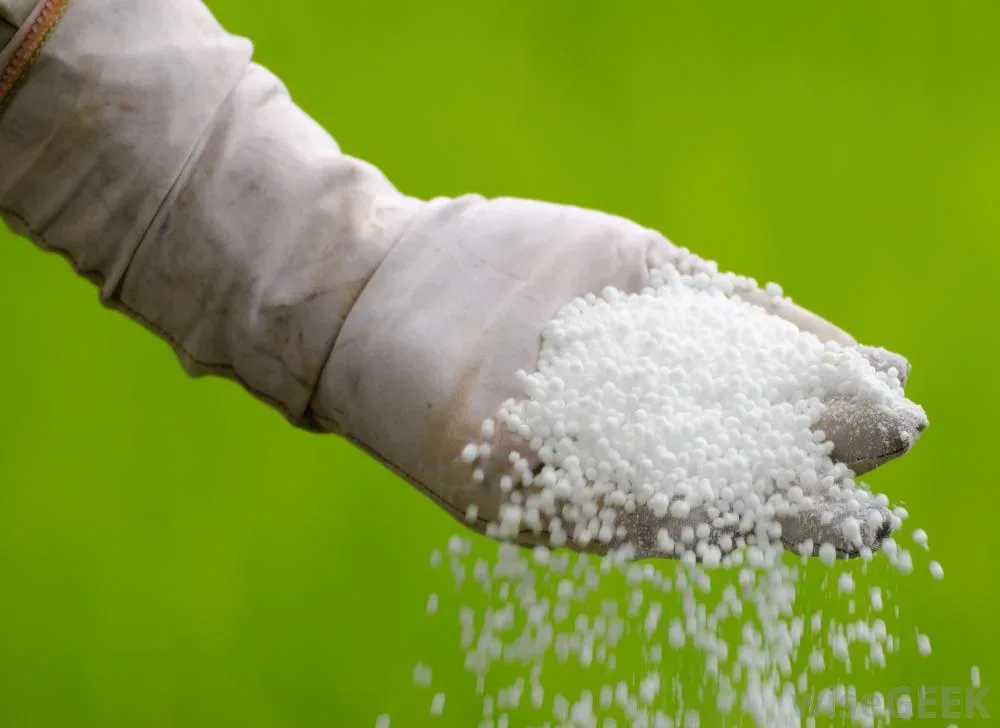Urea fertilizer can be beneficial for a wide range of plants, making it a versatile source of nitrogen for various crops and garden plants. Nitrogen is an essential nutrient required for plant growth and is a primary component of chlorophyll, which is necessary for photosynthesis. Here are some plants and types of vegetation that can benefit from urea fertilizer:
- Lawn Grasses: Urea is commonly used on lawns to promote lush, green growth. It can be suitable for various grass species, including Kentucky bluegrass, Bermuda grass, fescue, and zoysia grass.
- Cereal Crops: Urea is often used for cereal crops like wheat, barley, oats, and rye. These crops require nitrogen for proper grain and straw development.
- Corn (Maize): Corn is a nitrogen-hungry crop, and urea is frequently used to supply the necessary nitrogen for high yields.
- Rice: Urea is a common nitrogen source for rice cultivation, particularly in flooded or submerged rice fields.
- Vegetables: Many vegetable crops benefit from urea fertilization, including tomatoes, peppers, lettuce, and cucumbers. Urea can help improve leafy growth and fruit development.
- Fruit Trees: Urea can be used to promote the growth and health of fruit-bearing trees, such as apple, peach, and pear trees.
- Legumes: Some legume crops, like soybeans and peanuts, can benefit from supplemental nitrogen provided by urea, especially when the plants are not fixing sufficient nitrogen from the atmosphere through symbiotic relationships with nitrogen-fixing bacteria.
- Forage Crops: Forage crops like alfalfa and clover can be fertilized with urea to enhance their growth and nutritional value for livestock feed.
- Ornamental Plants: Urea can be used for ornamental plants, such as flowering shrubs and trees, to encourage foliage growth and vibrant blooms.
- Cover Crops: Urea is used for cover crops like rye, buckwheat, and winter wheat, which are planted to protect and improve the soil in between cash crops.
It’s important to note that the application of urea should be tailored to the specific needs of the plant or crop. Factors to consider include the growth stage, nutrient requirements, soil conditions, and local agricultural recommendations. Proper nutrient management and responsible fertilizer application are essential to maximize plant growth and minimize the risk of nutrient imbalances or environmental issues.
Can plants absorb urea directly?
Plants do not absorb urea directly as a source of nitrogen. Urea must undergo a series of transformations in the soil before it can be taken up by plants. Here’s how the process works:
- Hydrolysis: When urea is applied to the soil, it undergoes a chemical reaction called hydrolysis, facilitated by the enzyme urease present in the soil. During this process, urea breaks down into ammonium (NH4+) and bicarbonate (HCO3-) ions.
- Ammonium Uptake: The ammonium ions produced from urea hydrolysis are then available for plant uptake. Plants can absorb ammonium ions directly through their roots and use them as a source of nitrogen.
- Nitrification: Some of the ammonium ions may further undergo nitrification, a process where soil bacteria convert ammonium into nitrate (NO3-) ions. Nitrate is also a form of nitrogen that plants can take up through their roots.
It’s worth noting that the rate of hydrolysis and subsequent nitrification can be influenced by various factors, including soil pH, temperature, and the presence of urease enzymes. Urea is generally considered a slower-release nitrogen fertilizer compared to ammonium nitrate or other quick-release sources.
While plants cannot directly absorb urea, it is a common and effective source of nitrogen for many crops when used correctly. Urea is often used for its ability to provide a sustained supply of nitrogen to plants over time, and it can be a valuable component of a nutrient management strategy in agriculture and horticulture.
Does urea need to be watered in?
Urea fertilizer typically benefits from being watered in or incorporated into the soil shortly after application. Watering in or incorporating urea helps in several ways:
- Prevents Nitrogen Loss: Urea is susceptible to volatilization, a process in which nitrogen can be lost as ammonia gas when it comes into contact with moisture or high pH conditions. By watering in urea, you reduce the risk of nitrogen loss through volatilization, which can make more of the applied nitrogen available to plants.
- Promotes Dissolution: Watering urea into the soil helps dissolve the granules and facilitates the conversion of urea into ammonium and nitrate forms, which can be taken up by plants.
- Reduces Risk of Foliar Burn: If urea comes into direct contact with plant leaves, it can cause leaf burn or discoloration. Watering it into the soil helps avoid this risk.
- Enhances Uniform Distribution: Watering urea evenly across the treated area ensures a uniform distribution of nutrients, reducing the risk of uneven growth or nutrient imbalances in the soil.
- Reduces Leaching: Incorporating urea into the soil can also help reduce the risk of nitrogen leaching, which occurs when excess water carries nitrate nitrogen into deeper soil layers or groundwater.
The timing and method of watering in urea may vary depending on the specific crop, soil type, and environmental conditions. It’s generally advisable to water in or incorporate urea as soon as possible after application. The goal is to get the fertilizer into the root zone of the plants, where it can be effectively taken up for growth.
Sources: https://www.sciencemadness.org/smwiki/index.php/Urea


